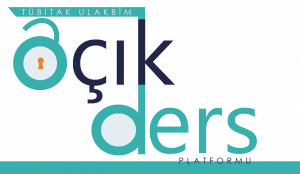Electronic Structure Calculations by Gaussian 16
Konu özeti
-
Skill Level: Introductory
Language: English
Workload: 2:30 hours total
Topic: Computational Chemistry
Overview: A course on electronic structure calculations by using Gaussian 16 software and Gaussview installed at Turkish National e-Science e-Infrastructure (TRUBA) will be introduced.
Course Description: Methods available in the Gaussian 16 package for research applications will be introduced to the TRUBA users. This course will introduce electronic structure theory for researchers in the field, and will focus on methods for computing energies, exploring molecular geometries, studying molecular properties by DFT calculations, reaction mechanism, solvation models, excited state calculations, and electronic and computational spectroscopy as well as some practical user considerations. An introduction to GaussView is also offered.
Course Contents: Gaussian 16 is a modern computational chemistry software that provides a comprehensive set of quantum chemical and molecular mechanics methods for performing a wide range of molecular modelling and analyses, including molecular structure optimizations, vibrational spectroscopy, thermochemistry calculations, reaction mechanism studies. The workshop will cover the basics of remote connection to TRUBA for Gaussian16 and Gaussview, setting up input and interpreting output files, the use of the graphical user interface GaussView, and an introduction to more specialist topics such as the calculation of molecular properties, excited states, transition states and intermediates.
Who Should Enroll: M.Sci and PhD students that have access to Gaussian16 or TRUBA.
Prerequisite: The workshop will be aimed at complete beginners. Experience with quantum chemistry can be useful.
Tools, libraries, frameworks used: Gaussian website, Gaussian16 and Gaussview access, MultiWfn and GaussSum.
Learning Objectives: Participants will learn how to access to both high-performance computing resources and run Gaussian16 software at TRUBA.
Basics of running Gaussian calculations
Geometry optimization for minima and transition states
How to calculate frontier orbitals, ESP, polarizability, atomic charges.. etc
Study molecular properties such as softness, reactivity indices, electronegativity …etc by using DFT methods
Vibrational spectroscopy and thermochemistry
NMR, VCD, EPR, excited electronic states and UV-visible spectroscopy
Reaction mechanism via computational chemistry
About the instructor(s): Erol Yıldırım received his Bachelor in Science degree from Bilkent University. He had M.Sci. degree and Ph.D. degree from İstanbul Technical University, Department of Chemistry on molecular modeling of polymer-clay nanocomposites. He worked as postdoctoral researcher in Aalto University in Finland for a year on the molecular dynamics simulation of thermoresponsive polyelectrolyte systems in collaboration with Texas A&M University. Erol Yıldırım studied as postdoctoral researcher in Fiber and Polymer Science Program at North Carolina State University between 2015-2017, to investigate how the degradation reaction mechanisms and kinetics of polyesters are affected by chemical and physical environment as a part of industrial project. He worked as a research scientist between 2017-2019 in Agency for Science, Technology and Research (A*STAR) Singapore, studied on the organic thermoelectrics. He is currently having Assistant Professor position in METU Department of Chemistry.
-
-
-
-
